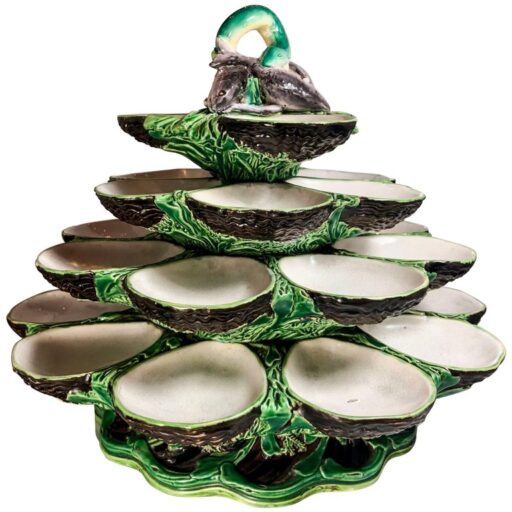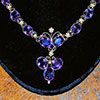Furniture Styles
AMERICA
- Colonial Period 1620-1775
Covers the history from the start of the European settlement and especially the history of the 13 colonies of Britain until they declared independence in 1776. Furniture was heavy and solid, with straight simple Hnes and little fuss or ornamentation. - Revolutionary Period 1775-1789
The political upheaval during the last half of the 18th century in which thirteen colonies in North America joined together to break free from the British Empire. Imports of mahogany, an ideal material for carving, allowed great innovations in style. The influences ofItalian, French, and even Chinese forms inspired those innovations. - Federal Period 1790-1825
It is characterized by graceful straight lines, light construction, tapered legs, and the use of inlay, and contrasting veneers. It is influenced by English Adam, Sheraton, Regency, Hepplewhite, French Directoire, and Empire. Mahogany was the primary wood used, but cherry, pine, and maple were also used. The most common ornament on this period of furniture was the eagle. - Empire Period 1800-1850
The chief material for furniture of this period was mahogany, both solid and in veneer. The types of design are of two kinds, one the Egyptian, the other the Classical. The lines were mostly straight.
FRANCE
- Louis XIV 1643-1715
Furniture scaled to the huge proportions of the rooms was made of ebony or covered with silver, gilt, or lacquer and decorated with carving and with marquetry. Mahogany and oak were the primary woods used. - Louis XV Period 1715-1774
Also known as the Regency, marked a shift from the weighty character of earlier rococo styles to embrace a more light-hearted, somewhat simpler feel. Carvings and marquetry were simplified and contributed more to the overall motif of the piece than in the prior period. Shell and flower motifs were used with rich upholstery. - Louis XVI Period 1774-1793
Simplicity replaced excess and the classic revival influenced decorative motifs and brought a return to straight lines and symmetry. Slenderness of proportion was emphasized in furniture predominantly made of mahogany. - Directoire Period 1795-1799
This period was named for the Directorate of France after the French Revolution. It is characterized by Etruscan-appearing forms and motifs, including mythical and stylized animal forms which were Roman motifs. - Empire Period 1800-1830
Essentially a continuation of the neo-classical style with a stronger archaeological emphasis. Napoleon's campaigns in Egypt inspired the use of Egyptian, Greek, and Roman ornament. Mahogany furniture took on winged lion supports and pilasters headed with sphinxes' busts or palm leaves.
BRITAIN
- Gothic Period 1100-1485
It is characterized by the use of highly decorative panels and the use of indigenous woods. - Tudor Period 1485-1558
The Tudor period is generally accepted as the reign of Henry VIII through the reign of Elizabeth I of England. Tudor furniture was typically massive, heavily carved, and influenced by Italian Renaissance furniture. The foregoing Gothic style contributed its straight lines to this period as well. - Elizabethan Period 1558-1603
Popular during the reign of Elizabeth I of England in the latter half of the 16th century, Elizabethan furniture is massive and often heavily carved. The style regained popularity in the early 19th century. - Jacobean Period (Early Stuart) 1603-1649
An English style of furniture, which is medieval in appearance with box-like straight lines, rigid designs, sturdy construction, ornate carvings and a dark finish. This period has a tendency toward Baroque. - William and Mary Period 1688-1702
It has Dutch and Chinese influences and is characterized by trumpet turned legs terminating in a ball or Spanish foot, padded or caned chair seats, and Oriental lacquer-work. - Queen Anne Period 1702-1714
The Queen Anne style is characterized by Baroque and a refmement of the William and Mary style with a moderately proportioned, graceful appearance. It is characterized by cabriole legs terminating in a pad or drake foot, fiddle-back chair back, and bat wing shaped drawer pulls. Walnut was the dominant wood used. - Georgian Period 1714-1820
Georgian furniture is a more ornate version of Queen Anne. It is characterized by heavier proportions, elaborately carved cabriole legs terminating in a pad or ball-and-claw foot, ornate carvings, pierced back splats, and the use of gilding. Among the best known designers were Hepplewhite, Sheraton, Chippendale, and the Adams Brothers. Common woods used were mahogany and walnut. - Regency Period 1810-1837
Greatly influenced by the French Empire period. Essentially a continuation of the nee-classical style with a stronger archaeological emphasis. Napoleon's campaigns in Egypt inspired the use of Egyptian ornament. Mahogany furniture took on winged lion supports and pilasters headed with sphinxes' busts or palm leaves. - Victorian Period 1837-1901
Named for Queen Victoria of England who reigned from 1837-1901. The Victorian style draws its influence from gothic forms with heavy proportions, dark fmish, elaborate carving, and ornamentation. The Victorian period was the first furniture style of mass production. - Adams, Robert 1728-1792
A 19th century style often included in the larger category of Federal. Adam style is characterized by a strong but restrained classical influence, somewhat heavier than contemporaries Hepplewhite and Sheraton. Characteristics of their style are straight lines, mythological figures, delicate ornaments, classical symmetry, satinwood, marquetry, and inlay. - Chippendale, Thomas 1718-1806
The Chippendale style can be classified into three types: French influence, Chinese influence, and Gothic influence. The Chippendale style was a more elaborate development of the Queen Anne style with cabriole legs, ball-and-claw foot, and broken pediment scroll top on tall case pieces. - Sheraton, Thomas 1751-1806
It is a neoclassical style characterized by delicate straight lines, light construction, contrasting veneers and neoclassical motifs and ornamentation. Mahogany was the predominant wood used.


